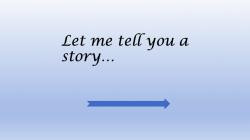<p>In this collection, I am exploring the connections between storytelling and art. I will also look at the connection of storytelling to neuroscience and the effects of storytelling on the human brain. I will be referencing the work of Will Storr (<em>The Science of Storytelling)</em>, neuroscientists, psychologists and resources from institutions such as the Smithsonian, The National Gallery of Art, The British Museum, National Geographic, and the J. Paul Getty Museum. I will look at how artists use content, meaning, and context to create narrative within their particular medium.</p>
<p>Research suggest that language developed as a way to convey "social information", gossip. Furthermore, it is documented that curiosity kicks the dopamine reward signal in the human brain. Will Storr in his 2019 book, gorgeously researched and perfectly titled <em>The Science of Storytelling</em> tells us that psychologist Jonathon Haidt says the brain is a 'story processor' not a 'logic processor'. All of this tells us that humans are hardwired to tell and receive stories. </p>
<p>How do artists tell stories? Both Storr and Kidd tell us that psychologist Dr. George Lowenstein asserts there are four ways to induce curiosity in the human brain: questions or puzzles; a sequence of events without revelation of the "end"; "violation of expectations that triggers a search for an explanation"; or knowing that someone else knows something and you want to know it too. One could almost use these as headings to categorize art and and artistic movements. Artist capture a moment in time that prods human curiosity, in some cases for thousands of years, to create the rest of the story of that suspended juncture.</p>
<p>The audience for this collection might be students of psychology or English. It could be of interest to creators of story including novelists, playwrights, actors, screenwriters, musicians, and visual artists. And anyone interested in what Storr termed as "the science of the human condition".</p>
<p>Will Storr writes, "One benefit of understanding the science of storytelling is that it illuminates the 'whys' behind the 'rules' we're commonly given...Knowing <em>why </em>the rules are the rules means we know <em>how </em>to break them..."</p>
<p>Sources:</p>
<p>Dunbar, Robin et al. <em>Evolutionary Psychology</em>. One World Publications, 2005.</p>
<p>Kidd, Celeste, and Benjamin Y Hayden. “The Psychology and Neuroscience of Curiosity.” <em>Neuron</em> vol. 88,3 (2015): 449-60. doi:10.1016/j.neuron.2015.09.010<br /></p>
<p>Storr, Will. <em>The Science of Storytelling.</em> London: William Collins, 2019.
</p>
<p><br /></p>
<p>#AHMCFall2019</p>

krambow
33
 krambow
krambow


